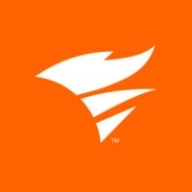


Find out what your peers are saying about Zabbix, Auvik, Datadog and others in Network Monitoring Software.
Previously we had thirteen contractors doing the monitoring for us, which is now reduced to only five.
Datadog has delivered more than its value through reduced downtime, faster recovery, and infrastructure optimization.
I believe features that would provide a lot of time savings, just enabling you to really narrow down and filter the type of frustration or user interaction that you're looking for.
The return on investment is significant as the solution effectively reduces costs while being worth its expense.
When I have additional questions, the ticket is updated with actual recommendations or suggestions pointing me in the correct direction.
Overall, the entire Datadog comprehensive experience of support, onboarding, getting everything in there, and having a good line of feedback has been exceptional.
I've had a couple instances where I reached out to Datadog's support team, and they have been really super helpful and very kind, even reaching back out after resolving my issues to check if everything's going well.
Issues that could be solved quickly sometimes take longer because they go around in circles.
I have reached out to customer support multiple times for various cases, particularly for customization such as creating dashboards, and my experience has been good.
If there is no timely response, getting a resolution is more difficult.
We had contact with SolarWinds regarding the implementation, and they were helpful.
They have good technical support.
Datadog's scalability has been great as it has been able to grow with our needs.
We did, as a trial, engage the AWS integration, and immediately it found all of our AWS resources and presented them to us.
Datadog's scalability is strong; we've continued to significantly grow our software, and there are processes in place to ensure that as new servers, realms, and environments are introduced, we're able to include them all in Datadog without noticing any performance issues.
SolarWinds NPM is scalable and effective in handling large network infrastructures.
Datadog is very stable, as there hasn't been any downtime or issues since I've been here, and it's always on time.
Datadog seems stable in my experience without any downtime or reliability issues.
These incidents are related to log service, indexes, and metric capturing issues.
The NPM product is stable, particularly when used for simple network monitoring.
It would be great to see stronger AI-driven anomaly detection and predictive analytics to help identify potential issues before they impact performance.
The documentation is adequate, but team members coming into a project could benefit from more guided, interactive tutorials, ideally leveraging real-world data.
In future updates, I would like to see AI features included in Datadog for monitoring AI spend and usage to make the product more versatile and appealing for the customer.
Using real-time data, if there are any malicious patterns or something happening, they can identify those.
Email alert customization is limited; it cannot be tailored much, which makes the system more rigid than optimal.
New Relic can get pricey for larger organizations.
SolarWinds needs to upscale on observability and add full-fledged observability features, including security features.
Customers have given feedback about the delayed response times from the technical team.
Features such as taking backup of the devices or configurations of the devices can be included in further versions of SolarWinds NPM.
The setup cost for Datadog is more than $100.
Everybody wants the agent installed, but we only have so many dollars to spread across, so it's been difficult for me to prioritize who will benefit from Datadog at this time.
My experience with pricing, setup cost, and licensing is that it is really expensive.
The solution is considered expensive.
Pricing-wise, SolarWinds NPM is more expensive than PRTG.
Our architecture is written in several languages, and one area where Datadog particularly shines is in providing first-class support for a multitude of programming languages.
Having all that associated analytics helps me in troubleshooting by not having to bounce around to other tools, which saves me a lot of time.
Datadog was able to find the alerts and trigger to notify our team in a very prompt manner before it got worse, allowing us to promptly adjust and remediate the situation in time.
Using New Relic speeds up troubleshooting and resolution, giving us a clearer picture of where issues are, thus saving time and effort.
The best features in New Relic include its numerous API integrations and a good source of support.
Another aspect I appreciate is its good alerting mechanism, which can throw alerts and can be configured with PagerDuty or Slack, allowing easy checks on triggers and troubleshooting using New Relic.
The most valuable feature for us is the database performance analyzer, which we use a lot.
SolarWinds NPM has specific modules for monitoring different network capabilities, which provides rich features for carrying out specific tasks.
It provides a detailed overview of the network, which is valuable.
| Product | Market Share (%) |
|---|---|
| Datadog | 2.9% |
| SolarWinds NPM | 4.2% |
| New Relic | 1.8% |
| Other | 91.1% |



| Company Size | Count |
|---|---|
| Small Business | 80 |
| Midsize Enterprise | 46 |
| Large Enterprise | 95 |
| Company Size | Count |
|---|---|
| Small Business | 65 |
| Midsize Enterprise | 50 |
| Large Enterprise | 61 |
| Company Size | Count |
|---|---|
| Small Business | 59 |
| Midsize Enterprise | 33 |
| Large Enterprise | 84 |
Datadog integrates extensive monitoring solutions with features like customizable dashboards and real-time alerting, supporting efficient system management. Its seamless integration capabilities with tools like AWS and Slack make it a critical part of cloud infrastructure monitoring.
Datadog offers centralized logging and monitoring, making troubleshooting fast and efficient. It facilitates performance tracking in cloud environments such as AWS and Azure, utilizing tools like EC2 and APM for service management. Custom metrics and alerts improve the ability to respond to issues swiftly, while real-time tools enhance system responsiveness. However, users express the need for improved query performance, a more intuitive UI, and increased integration capabilities. Concerns about the pricing model's complexity have led to calls for greater transparency and control, and additional advanced customization options are sought. Datadog's implementation requires attention to these aspects, with enhanced documentation and onboarding recommended to reduce the learning curve.
What are Datadog's Key Features?In industries like finance and technology, Datadog is implemented for its monitoring capabilities across cloud architectures. Its ability to aggregate logs and provide a unified view enhances reliability in environments demanding high performance. By leveraging real-time insights and integration with platforms like AWS and Azure, organizations in these sectors efficiently manage their cloud infrastructures, ensuring optimal performance and proactive issue resolution.
New Relic offers real-time application monitoring and insight into performance bottlenecks. Its customizable dashboards and APM integration provide efficient operational support, while server performance alerts ensure quick issue detection.
New Relic provides comprehensive monitoring of application performance, tracking bottlenecks across databases and front-end components. Users employ it for server and infrastructure monitoring, as well as analyzing key metrics such as CPU and memory usage. The solution's ability to integrate with tools like PagerDuty enhances incident management capabilities. However, users have expressed a need for improvements in query language simplicity, more detailed historical insights, and better mobile app monitoring support.
What are New Relic's most important features?In industries like e-commerce and financial services, New Relic supports application performance monitoring to enhance user experience and system reliability. Organizations leverage its insights for optimizing performance, particularly in server operations and infrastructure management. Its ability to monitor API failures through synthetic monitoring is crucial for maintaining high service levels.
SolarWinds NPM is a network monitoring solution that enables you to detect, diagnose, and resolve network performance issues and outages quickly and efficiently. The solution is a powerful tool that can help you increase service levels, reduce downtime with multi vendor network monitoring, simplify the management of complex network devices, improve operational efficiency, and much more.
SolarWinds NPM Features
SolarWinds NPM has many valuable key features. Some of the most useful ones include:
SolarWinds NPM Benefits
There are several benefits to implementing SolarWinds NPM. Some of the biggest advantages the solution offers include:
Reviews from Real Users
Below are some reviews and helpful feedback written by PeerSpot users currently using the SolarWinds NPM solution.
PeerSpot user Andrew N., Senior Network Engineer at Element Critical, says, “The "Performance Analyzer" feature is the solution's most valuable aspect. It's able to do the bounded graphs of all the interface stats, from errors to broadcasts and to current traffic. With a click of a button you're able to, in one interface, look at historical data for those items.” He also adds, “From the troubleshooting point of view, just having that peace of mind is great. And, The solution is extremely stable. We haven't had any issues in that regard. We haven't had issues with bugs, glitches, or crashes."
Daniel S., Systems and Data Warehouse Supervisor at MMSD, mentions, “The alerting and usage tracking is a valuable feature because it alerts us when we're getting near capacity on disk space, network utilization or processor utilization. It helps us manage our capacity and enables us to be proactive.”
A Senior Vice President and CIO at a financial services firm explains, “As we look to add more servers to our virtual environment and to understand the impact, the solution allows us to dig into the historical charts related to capacity planning. It also gives us visibility of spikes and allows us to track down the reasons for their occurrences. So too, it makes room for potential processes that have gotten hung or runaway and to know when it's time to reboot a server or service.”
Dinesh N., Digital Innovation at Bobcat Company, states, “The best part of the solution is the sharing display. It gives a general public ID wherein everyone can link to a public display. That's a good feature.”
Fazal A., Implementation & Support Specialist at 360Factors, comments, “We have configured multiple alerts for our network devices, including routers and switches, so that we are notified if any interface goes down. In the event an interface goes down, we have multiple reports that include availability monitoring, network uptime monitoring, and network downtime monitoring. These reports are on multiple schedules such as the end of the day, end of the last business day of the week, monthly, and quarterly. This gives us the ability to provide reports to our management and let them know the performance of our network.”